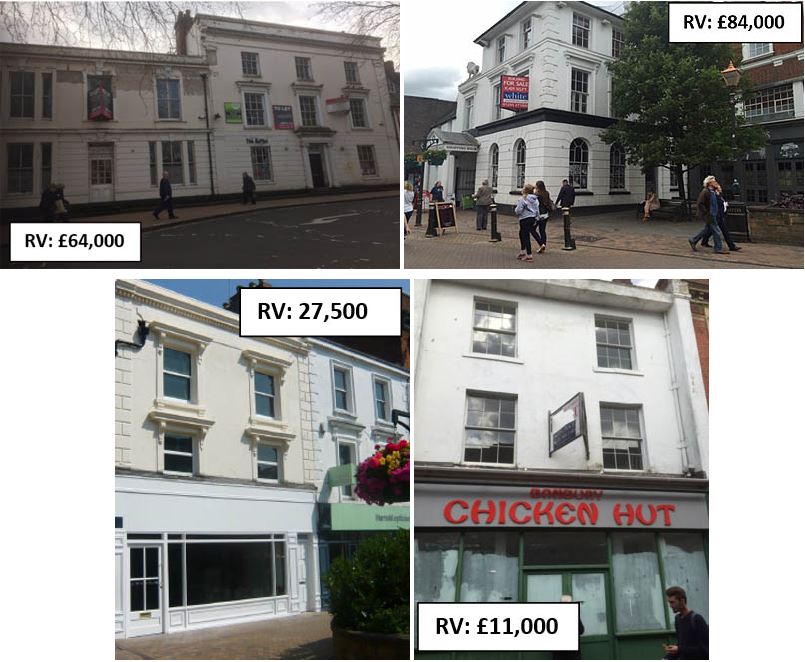Business rates is a complex area. Start explaining it to someone and you can see their eyes glaze over! Business rates frequently crops up with my work on town centre retail property so I've developed something of an understanding.

Three quick facts:
- Business Rates is a tax on business property (usually payable by the occupier) levied by the Council but with the rules set by central Government
- Vacant property is usually subject to the tax (and in such circumstances is usually paid by the owner)
- Vacant Listed Buildings (due to historic or architectural merit) are not subject to the tax.
This piece is about the Business Rates relief that Listed Buildings enjoy. Below is a selection of empty shops in Banbury, as examples.
They are all Grade 2 Listed with such a status rightly to protect their historical and/or architectural merits.
But empty Listed Buildings are a particular challenge for town teams...
One of the reasons for this is the generous Business Rates advantage granted to the owners of Listed Buildings. Vacant Listed Buildings attract a full and permanent business rate exemption. This is in contrast to non listed buildings where business rates is payable (for shops after three months) when vacant. These rules are set centrally. The advantage potentially gives owners additional funds to invest in maintenance and repair.
The payment of Business Rates is an incentive on property owners to encourage occupancy as the charge will be transferred from the owner onto the occupier. This encouragement is lost on vacant Listed Buildings.
My colleagues and I have great success working with landlords of vacant shops to identify viable retail occupiers for the benefit of the town. The owners pass on the Business Rate charge to the occupier who in return enjoys use of the building. This incentive is lost where the vacant property is Listed as there is no rates payable.
Each of the examples shows a vacant Listed retail property. Unfortunately vacancy often leads to a lack of maintenance creating a deterioration of the property we want to preserve. I see very few examples of owners using the tax relief to the benefit of the property.
My colleagues and I keep a record of the occupancy levels in Banbury town centre. Based on my research reoccupation of the current vacant Listed Buildings in Banbury town centre ) which includes offices and shops) alone would add over £350,000 per year to the revenue of Cherwell District Council. That revenue is currently lost as there is no scheme to claim it back.
This leads me to conclude it's in each Council’s interest to work hard to encourage occupancy even to a charitable user (as the charitable relief can be re-claimed by the Council).
This benefit undermines the protection of the Listed Buildings, as vacant properties quickly deteriorate. My suggestion is that Government change the rules so all Grade 2 Listed Buildings lose this business rate exemption.